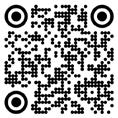
Helping Patients Make Health Care Decisions



Developed by







Developed by


Regina Burke, a 79-year-old woman, tells her primary care physician during a visit to check on her diabetes that she noticed a small lump in her breast that seems to be growing.
Her physician, Dr. Miller, examines the lump and asks Mrs. Burke about any family history of breast cancer. Dr. Miller tells Mrs. Burke that she will start by ordering a mammogram and then decide on next steps once they have those results. Mrs. Burke replies, “Why bother with a mammogram? At my age, breast cancer will be the least of my worries. And I don’t want to put myself through that miserable treatment.”
As a health care professional, you’ve likely encountered similar objections from a patient. It isn’t always clear what factors patients consider when making decisions about their health care. In this guide to helping patients make decisions about their health care, we’ll discuss some factors that influence decision-making and how you, as a health care provider, can adopt strategies that support your patients in making better choices.
Consider what might be behind Mrs. Burke’s decision not to get the mammogram. She may have heard “horror stories” about other patients receiving cancer treatment and is afraid of experiencing similar difficulties. You may be able to overcome this patient’s objections by giving her survival statistics and information about the likelihood of the lump being cancerous, especially for a woman in her age range.
The key takeaway from this story and the examples that follow is that communicating effectively with your patients is a critical part of patient-centered practice and to inform decision making.


Factors that influence patient decision-making include those related to the diagnosis and treatment of their specific medical condition, as well as factors related to societal and personal considerations.
How much information does the patient have about their diagnosis?
Paying close attention to both the verbal (what is said) and nonverbal (body language and emotions) content of what is being communicated.
Effective techniques for active listening include:
1. Maintaining eye contact. Engage with patients by looking at them attentively.
2. Avoiding interrupting. Give patients time to finish their thoughts before responding. Interrupting can make them feel unheard.
3. Using nonverbal cues. For example, use facial expressions to show understanding and encouragement.
• Use plain language instead of technical terms or medical jargon.
• At the same time, avoid “talking down” to the patient.
As a provider, one of your tasks is to provide patients with all the relevant information about their medical condition. Offer clear explanations using language appropriate to the patient’s capacity to understand.
Part of successful communication is active listening. After you have provided your patients with information about their medical condition, ask questions to ensure they understand what they have heard. Listen carefully to their comments, taking note of both verbal and nonverbal cues, and answer any questions fully.
What treatment options are available?
Clear communication regarding all treatment options begins with telling patients about the possible treatments available for their disease or condition, along with describing both the benefits and risks associated with each option. This allows patients to make decisions that align with their personal health goals and values. Health care providers who take the time to discuss patients’ options thoroughly can help their patients weigh their options more effectively.
How do patients view their relationship with the health care provider?
A strong patient–provider relationship is essential for patient–centered care, and is built on trust, mutual respect, and open communication. When patients feel comfortable with their health care provider, they are more likely to share important information about their health, adhere to treatment


plans, and follow through with medical advice. With this foundation, providers can tailor their recommendations to better fit each patient’s unique needs, preferences, and circumstances.
One common cause of miscommunication between patients and their health care providers is age-related bias. For instance, a provider may assume that an older patient is not capable of understanding complex medical information. The provider then oversimplifies explanations or neglects to provide comprehensive details instead of modifying terminology so it is both accurate and accessible to the patient. Older patients might feel patronized or not taken seriously if spoken to in a dismissive manner, leading to frustration and a lack of trust in the provider.
Effective communication requires recognizing and overcoming age-related biases. Providers should strive to understand each patient’s individual needs and abilities, avoiding stereotypes based on age. By actively listening and responding to older patients
Preconceived notions about the capabilities, needs, or preferences of others based solely on their age.
Prejudices and stereotypes can influence treatment, care, and medical decision–making for individuals based on their age, potentially affecting diagnosis, treatment options, patient–provider interactions, and, ultimately, the quality of care older patients receive.
An example of age-related bias is overlooking symptoms in older patients because of an erroneous assumption that these symptoms are a “normal part of aging.”

with respect and empathy, providers can ensure patients feel valued and heard, thereby fostering a strong patient–provider relationship that is crucial for effective health care.
By building and nurturing a trusting relationship, health care providers can enhance patient satisfaction, adherence to medical recommendations and overall health outcomes.
Alice Chung is a 66-year-old woman who is meeting her primary care physician for a “Welcome to Medicare” visit. As part of the assessment, Dr. Johnson asks Mrs. Chung whether she has received the Shingrix vaccine for shingles. Mrs. Chung shakes her head. “No, I haven’t. I saw a sign at the pharmacy and thought about it, but my arm always hurts so much after I get any kind of shot. Do I really need it?”
Dr. Johnson leans forward, maintaining eye contact, signaling that he is listening closely. “Mrs. Chung, I understand your concerns. I can give you some information about the vaccine so you can make an informed decision that’s right for you.”
He begins by explaining what the shingles vaccine is in simple, nontechnical language, avoiding medical jargon. “The vaccine is safe and more than 90 percent effective at preventing you from getting shingles, which can be very painful. While some people might experience mild side effects from getting vaccinated, such as soreness at the injection site or a low-grade fever, these typically go away in a day or two.”
Dr. Johnson pauses, giving Mrs. Chung time to absorb the information and ask questions. “I had a bad reaction to a vaccine years ago,” she admits. “I’m worried it might happen again.”
Showing empathy, Dr. Johnson nods. He listens actively as Mrs. Chung describes her fear of getting sick from the vaccine, then reassures her. “The shingles vaccine does not contain the whole virus that causes the illness, so you can’t get shingles from getting the vaccine,” he says.
Dr. Johnson then outlines the benefits of getting the vaccine and the risks of not getting it. He informs Mrs. Chung that older adults have a greater risk of severe complications from shingles, which is a very painful condition that could
cause her a lot more distress than any side effect she might experience from the vaccine.
Throughout the conversation, Dr. Johnson maintains a respectful and open demeanor. He asks questions to ensure Mrs. Chung understands the information, listens carefully to her comments, and answers her questions fully. This active listening and clear communication build trust and mutual respect in the patient-provider relationship.
Finally, Dr. Johnson addresses any financial considerations. “The cost of the vaccine is fully covered by Medicare Part D, so you won’t have to pay anything out of pocket.”
Feeling valued and heard, Mrs. Chung decides to get the Shingrix vaccination. Dr. Johnson asks the nurse to administer the vaccine. As Mrs. Chung leaves, she thanks Dr. Johnson for taking the time to explain the importance of getting the vaccine.

By employing active listening and addressing Mrs. Chung’s health care concerns with respect, Dr. Johnson has fostered a trusting relationship that enhances her satisfaction and the likelihood that she will adhere to medical advice in the future.
The choices that patients make concerning their health care are shaped by their religious beliefs, personal values, and emotional state. These societal and personal influences can affect how individuals perceive their health, weigh risks and benefits, and respond to medical advice.
• Provide each patient with all the relevant information.
• Explain the risks and benefits.
• Actively listen to the patient’s concerns.
Patients’ personal values and preferences are integral to their medical decision-making. These values and preferences are often shaped by a variety of factors, including their lifestyles, ethical beliefs, cultural backgrounds, and past experiences with health care. Patients feel more respected and understood when health care providers acknowledge and validate these personal perspectives.
Understanding patients’ values and preferences requires active listening and engagement from the health care provider. Certainly, this patient-centered approach to care requires providers to be intentional and effective in their use of time. For example, strategies to optimize patient-physician interactions during a visit include collecting information from the patient in the portal ahead of the visit and through interviews with medical assistants and nurses to gather information, emphasizing the importance of an interdisciplinary care team to support comprehensive patient care.

This approach empowers patients, making them active participants in their care decisions rather than passive recipients. Furthermore, it encourages a more comprehensive view of health in which the patient’s emotional, social, and psychological well-being are considered in conjunction with their physical medical needs. Patients who feel valued and understood are more likely to have better treatment compliance and outcomes and trust their provider, fostering loyalty and stability with the provider’s practice.
Suraj Patel, a 76-year-old man at an inpatient rehabilitation center, has been struggling with his dietary regimen since admission. Although he is not completely vegetarian, the menu he has been offered often includes beef and pork, which he is not used to eating. The dietitian, learning of Mr. Patel’s Hindu background, makes it a priority to understand his needs and preferences. She engages in a detailed conversation with him, learning about his favorite foods, the dietary restrictions he follows, and the dishes that provide him comfort and joy. Taking this information into account, she crafts a meal plan that meets his nutritional requirements as well as respects his cultural and personal tastes.
The dietitian’s approach helps Mr. Patel feel valued and understood. By incorporating familiar foods into his dietary plan and respecting his preferences, she fosters a sense of normalcy and satisfaction, which are crucial for his recovery. The collaborative effort between the dietitian and the patient exemplifies the importance of considering personal values and preferences. It helps to ensure that Mr. Patel’s journey toward better health is both respectful and effective.


Acknowledging and accommodating personal values and preferences are integral to ensuring successful, patient-centered care.

The cost of diagnostic tests, treatments, and medications can be a major determinant in whether patients seek care, adhere to prescribed regimens, or opt for less expensive alternative therapies. Financial barriers can lead to delayed care, inadequate treatment, and poorer health outcomes, particularly for those with limited insurance coverage or financial resources.
By understanding and addressing these financial concerns, health care providers along with their staff can offer solutions exploring affordable options and providing information about available assistance programs.
When health care providers acknowledge and actively address financial considerations, they can help mitigate these barriers, leading to more effective health care delivery. This approach not only supports informed decision-making but also fosters a trusting relationship in which patients feel valued and supported in their pursuit of health and well-being.
Religious beliefs and cultural norms are powerful determinants in shaping patients’ health care decisions. These factors can influence patients’ acceptance of certain treatments and procedures, the perception of illness, and the trust they place in health care providers. Some cultures may have specific norms, rituals, or dietary restrictions that must be considered when planning medical care. For example, persons from Asian and Pacific Island cultures may emphasize family decision-making, with the eldest male family member often playing a key role. Traditional medicine, including herbal remedies, is also commonly integrated with modern health
care. Individuals from Hispanic cultures may seek guidance from folk healers alongside conventional medical treatment. Understanding these cultural perspectives helps health care providers offer more respectful and effective care.
Some patients may have religious prohibitions against certain medical interventions, which require sensitive and respectful navigation by health care professionals.

Dolly Brown is 69 years old, and her physician, Dr. Sellick, has just informed her that she is at risk of severe blood loss during upcoming surgery and may require a blood transfusion. Miss Brown is a Jehovah’s Witness and refuses to give consent for the transfusion. She has checked with the elders in her congregation, and tells Dr. Sellick that she cannot accept any blood products, even blood salvaged from her own body.
Dr. Sellick has not previously encountered this circumstance, but he listens actively as Miss Brown explains that, as a Jehovah’s Witness, she is prohibited from receiving blood or blood products. Once Dr. Sellick understands that her refusal is based on a strongly held religious belief, he offers to research options that align with her faith.
Dr. Sellick discusses with the surgical team ways to make the surgery as safe as possible, including options for minimizing blood loss during surgery. He then presents these options to Miss Brown and assures her that her decision will be honored.

Confident that her wishes will be respected, Miss Brown is content to proceed with the surgery.
Health care professionals who take the time to understand and respect the religious beliefs and cultural norms of their patients can offer tailored care that aligns with the patient’s values and beliefs. This is crucial in addressing potential conflicts, nurturing a trusted patient–provider relationship, and building a supportive environment where patients feel comfortable discussing their concerns and preferences.
People make numerous decisions each day and many factors go into those decisions. Providing patient-centered care requires that health care providers both understand how their patients make decisions and develop strategies to help them make the best possible decisions.
Some typical factors that influence patients’ medical decision-making are:
• Lack of complete information. Patients may have challenges with medical decision-making due to insufficient knowledge about their condition and treatment options.
• Personal values and preferences. Individual values and preferences can influence health care choices.
• The patient–provider relationship. A lack of trust in health care professionals or the health care system can hinder effective communication and decision-making.
• Age-related biases. Health care provider biases against older adults may affect their patients’ treatment and their overall health care experience.
• Financial considerations. The cost of diagnostics, medications, and procedures can deter patients from seeking care or adhering to prescribed regimens. Addressing these concerns by discussing insurance coverage, exploring affordable options, and providing information on assistance programs can mitigate these barriers.
• Religious beliefs and cultural norms. These elements play a crucial role in shaping patients’ health care choices. Cultural competence—including understanding— and respecting patients’ beliefs and practices, is essential for offering tailored care and resolving potential conflicts.
Understanding and addressing these factors is critical for fostering equitable and effective health care delivery, especially as people live longer and healthier lives.
Strategies for overcoming communication barriers when providing patient care include:
• Providing complete information using patient-friendly language regarding the patient’s diagnosis and treatment options.
• Learning what the patient’s personal values and preferences are, and acting in ways that respect them.
• Employing active listening to build trust and foster an effective patient–provider relationship.
• Guarding against age-related bias in the diagnosis and treatment of older adults.
• Respectfully addressing patients’ financial concerns.
• Honoring religious beliefs and cultural norms.
In summary, a critical component of patient-centered care is being aware of potential barriers to effective communication between health care providers and their patients. Providers and their staff can improve patient care and outcomes by employing the strategies for addressing these barriers described in this guide. g
Centers for Disease Control. 2024 (July 19). Shingles Vaccination. https://www.cdc.gov/shingles/vaccines/index.html
Gerontological Society of America. 2016. Communicating With Older Adults: Recognizing Hidden Traps in Health Care Decision Making. https://c71e51fd48f7d4e8953f-0e0aff42bceeb6e1a9f1936328972721.ssl.cf2.rackcdn.com/ gsa_ab9a8ca4857952e5fffee376ce2a0cf3.pdf
Gerontological Society of America. Communicating With Older Adults. https://geron.org/ageism
U.S. Census Bureau. 2023 (June 2). America Is Getting Older. Press release. https://www.census.gov/newsroom/press-releases/2023/population-estimates-characteristics.html
Weir, K. 2023. Ageism is one of the last socially acceptable prejudices. psychologists are working to change that. Monitor on Psychology 54(2). https://www.apa.org/monitor/2023/03/cover-new-concept-of-aging


1101 14th Street NW, Suite 1220
Washington, DC 20005
geron.org

geron.org/ageism

